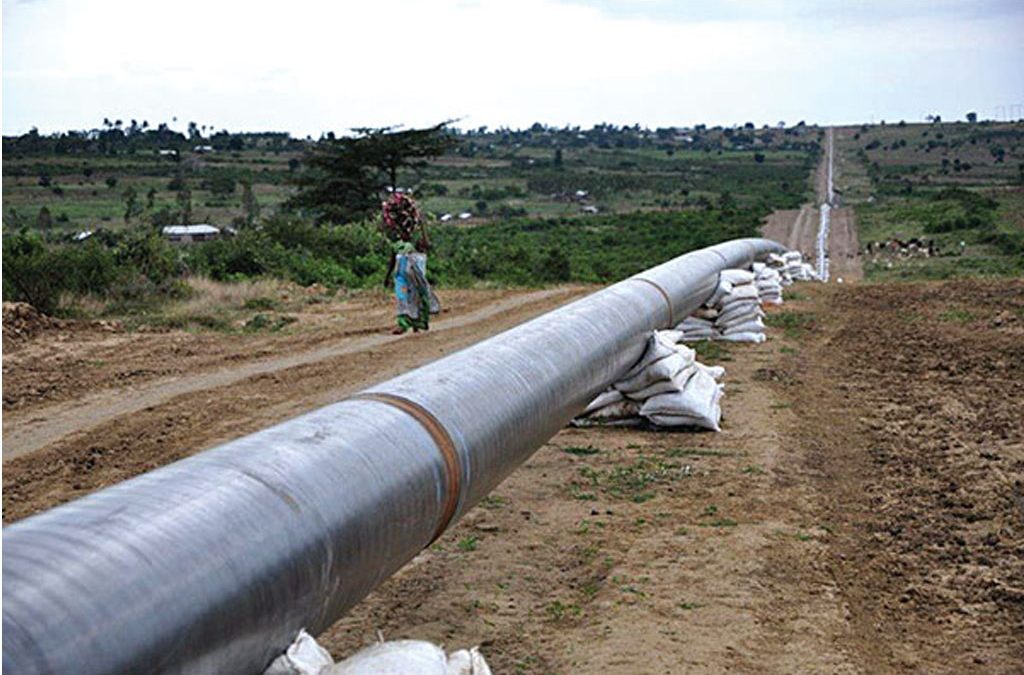In 2013, Uganda and Kenya signed a historic Memorandum of Understanding (MoU) to construct a crude oil pipeline from Uganda’s oil fields in Hoima to Kenya’s Lamu Port. This agreement marked a turning point in East Africa’s energy sector, promising to unlock billions in oil revenues, enhance regional trade integration, and position Kenya and Uganda as key players in Africa’s petroleum industry.
This in-depth analysis explores:
- The Background and Significance of the Pipeline Deal
- Key Features of the Uganda-Kenya Crude Oil Pipeline
- Economic and Strategic Benefits for East Africa
- Challenges and Controversies Surrounding the Project
- Impact on Companies Like Medic Holdings Limited
- Current Status and Future Prospects
By examining this project through the lens of Medic Holdings Limited, a major East African petroleum logistics company, we assess how regional infrastructure developments shape the energy market.
-
Background: Why the Uganda-Kenya Pipeline Was Needed
Uganda’s Oil Discovery and Export Dilemma
- 2006: Uganda discovers 6.5 billion barrels of oil reserves in the Albertine Graben.
- Challenge: Landlocked Uganda needed an export route for crude oil.
- Options Considered:
- Northern Route (South Sudan): Politically unstable.
- Tanzania Route (Tanga Port): Longer but more stable.
- Kenya Route (Lamu Port): Shorter, but required new infrastructure.
Kenya’s Vision for Lamu Port and LAPSSET
- The Lamu Port-South Sudan-Ethiopia Transport (LAPSSET) Corridor was Kenya’s $25 billion mega-infrastructure plan.
- The crude oil pipeline would be a key component, linking Uganda’s oil fields to international markets.
The 2013 Agreement
- Uganda and Kenya agreed to jointly develop the 1,200km pipeline at an estimated cost of $3.5 billion.
- Expected completion: 2018-2020 (later delayed).
-
Key Features of the Uganda-Kenya Crude Oil Pipeline
Pipeline Specifications
| Feature | Details |
| Length | 1,200 km (Hoima to Lamu) |
| Capacity | 200,000 barrels per day (expandable) |
| Estimated Cost | $3.5 billion |
| Partners | Uganda, Kenya, TotalEnergies, CNOOC |
Route and Infrastructure
- Uganda Section: Hoima → Kabaale → Kenya border
- Kenya Section: Lokichar (Turkana oil fields) → Lamu Port
- Lamu Port Expansion: New crude oil export terminal
Financing and Investors
- Lead Developers: TotalEnergies, CNOOC, Uganda National Oil Company (UNOC), Kenya Pipeline Company (KPC)
- Financing Mix: Private investors, AfDB, China Exim Bank
-
Economic and Strategic Benefits
For Uganda
✔ Oil Revenue Generation: Expected $2-3 billion annually at peak production.
✔ Job Creation: 10,000+ direct and indirect jobs.
✔ Industrial Growth: Refinery development in Hoima.
For Kenya
✔ Lamu Port Becomes an Oil Hub: Attracts global shipping and trade.
✔ Turkana Oil Fields Integration: Kenya’s own oil (Lokichar fields) could use the pipeline.
✔ Transit Fees: Estimated $12-15 per barrel in revenue.
For East Africa’s Energy Market
- Reduced Dependence on Middle East Imports
- Lower Fuel Costs due to regional refinery integration
- Attracts More Oil & Gas Investments
Impact on Medic Holdings Limited
- New Logistics Opportunities: Fuel storage, trucking, and port services.
- Potential Partnership with Pipeline Operators: Supply of petroleum products.
- Expansion into Oilfield Services: Supporting drilling and transportation.
- Challenges and Controversies
Delays and Cost Overruns
- Original Deadline: 2018 (missed due to financing and land disputes).
- Cost Escalation: From 3.5Bto3.5Bto5B+ due to inflation and route changes.
Environmental and Social Concerns
- Land Compensation Disputes in Kenya and Uganda.
- Wildlife Impact: Pipeline crosses protected areas.
- Community Protests: Fear of pollution and displacement.
Competing Tanzania Pipeline (2022 Shift)
- In 2022, Uganda signed a deal with Tanzania for an alternative 1,443km pipeline (Hoima-Tanga).
- Reasons for the Shift:
- Lower Political Risk: Tanzania seen as more stable.
- Shorter Construction Timeline.
- TotalEnergies’ Preference.
What Happened to the Lamu Pipeline?
- The Uganda-Kenya pipeline was deprioritized but not fully abandoned.
- Kenya may still use it for Turkana crude oil exports.
-
Current Status and Future Outlook
Lamu Pipeline in 2024
- Not Fully Canceled: Kenya still pushing for Turkana oil exports.
- Possible Revival: If Uganda’s Tanzania pipeline faces delays.
Medic Holdings’ Role in the Evolving Market
- Adapting to New Trade Routes: Expanding into Tanzania fuel logistics.
- Diversifying Beyond Pipeline Dependence: Investing in storage and distribution.
Lessons for East African Energy Projects
✔ Regional cooperation is key but requires strong execution.
✔ Private sector involvement (like Medic Holdings) ensures sustainability.
✔ Alternative routes reduce risk.
Conclusion: A Turning Point That Evolved
The 2013 Uganda-Kenya pipeline agreement was a visionary project that faced real-world hurdles. While it didn’t materialize as initially planned, it:
- Highlighted East Africa’s oil potential
- Paved the way for future infrastructure deals
- Showed the importance of private sector adaptability (like Medic Holdings)
Today, the energy landscape is shifting, but the vision of an integrated East African oil market remains alive.
Key Takeaways for Investors & Businesses
- Monitor Tanzania’s pipeline progress (expected 2025 completion).
- Watch Kenya’s Turkana oil developments.
- Companies like Medic Holdings must stay flexible in evolving markets.
-
Medic Holdings’ Strategic Positioning in the Changing Pipeline Dynamics
Adapting to the Tanzania Pipeline Shift
With Uganda’s pivot to the Hoima-Tanga route, Medic Holdings has demonstrated remarkable agility in recalibrating its operations:
- Tanzania Corridor Development
- Established strategic partnerships with Tanzanian logistics firms
- Secured storage contracts at Tanga Port (20,000m³ capacity)
- Developed trucking routes from Tanga to key Ugandan border points
- Kenyan Market Retention Strategy
- Maintaining strong presence in Kenyan petroleum distribution
- Positioning for potential Turkana crude logistics contracts
- Leveraging existing Lamu Port infrastructure for regional fuel distribution
Comparative Advantage in the New Landscape
| Capability | Medic Holdings’ Edge | Competitor Benchmark |
| Cross-border logistics | 15 years regional experience | New entrants lack local knowledge |
| Fuel storage | 50,000m³+ regional capacity | Most competitors <20,000m³ |
| Financing | Dubai-backed trade facilities | Reliant on local bank funding |
-
Emerging Opportunities in Regional Energy Integration
Downstream Expansion Potential
- Modular Refinery Projects: Exploring partnerships in Uganda’s Kabaale refinery
- LPG Distribution: Capitalizing on East Africa’s shift to cleaner fuels
- Aviation Fuel: Expanding services to new regional airports
Innovative Financing Models
- Infrastructure Bonds: Participating in Kenya’s LAPSSET financing
- Commodity-Backed Facilities: Using Dubai entity for structured trade finance
- Public-Private Partnerships: Bidding for fuel supply contracts along pipeline routes
-
Risk Management in a Shifting Market
Geopolitical Risk Mitigation
- Dual-Corridor Strategy: Maintaining capacity in both Kenya and Tanzania routes
- Currency Hedging: Using UAE banking relationships to manage forex exposure
- Political Risk Insurance: Covering investments through MIGA guarantees
Operational Contingencies
- Alternative Storage Network: Strategic reserves in Mombasa and Dar es Salaam
- Multi-Modal Transport: Rail and road flexibility for fuel distribution
- Digital Monitoring: Real-time tracking of shipments and inventories
-
Technological Integration in Petroleum Logistics
Digital Transformation Initiatives
- Smart Pipeline Monitoring (for future participation)
- IoT sensors for leak detection
- Predictive maintenance systems
- Automated Inventory Management
- AI-driven demand forecasting
- Blockchain-based documentation
- E-Logistics Platform
- Unified tracking system across borders
- Mobile app for partner coordination
Sustainability Innovations
- Carbon-Neutral Trucking Pilot: Electric and biofuel-powered fleet
- Solar-Powered Storage: Implementing at key depot locations
- Spill Response Systems: Advanced containment technologies
-
Human Capital Development for Energy Infrastructure
Specialized Workforce Training
- Pipeline operations certification programs
- Hazardous materials handling training
- Cross-border compliance education
Leadership in Regional Standards
- Participating in EAC petroleum regulations formulation
- Leading safety protocol development
- Establishing industry training academies
-
Financial Projections and Investment Case
5-Year Growth Outlook
| Segment | 2023 | 2025 Projection | 2028 Target |
| Fuel Distribution | $150M | $220M | $350M |
| Storage Services | $20M | $45M | $80M |
| Pipeline Logistics | – | $15M | $50M |
| Total Revenue | $170M | $280M | $480M |
Investment Requirements
- $50M for storage infrastructure expansion
- $30M for clean fuel transition
- $20M for digital transformation
-
Strategic Recommendations for Medic Holdings
- Immediate Actions (0-12 months)
- Finalize Tanga Port storage agreements
- Secure anchor client for Turkana crude logistics
- Launch Dubai-based trade finance facility
- Medium-Term (1-3 years)
- Bid for Uganda refinery offtake contracts
- Establish LPG distribution network
- Implement AI-driven logistics platform
- Long-Term (3-5 years)
- Become regional leader in pipeline operations
- Develop integrated energy solutions
- List on East African securities exchange
-
Conclusion: Navigating the Future of East African Energy
The changing pipeline dynamics present Medic Holdings with both challenges and unprecedented opportunities. By:
✔ Maintaining strategic flexibility across multiple corridors
✔ Investing in technology and sustainability
✔ Developing human capital and partnerships
The company is positioned to not just adapt to, but actively shape, the future of East Africa’s energy infrastructure. The lessons from the Lamu pipeline experience have created a more resilient, forward-looking organization ready to capitalize on the region’s energy transformation.
Key Takeaways for Stakeholders:
- Regional energy infrastructure remains a high-growth sector
- Agility and diversification are critical success factors
- Technology adoption will separate leaders from followers
- Sustainable practices are becoming competitive necessities

